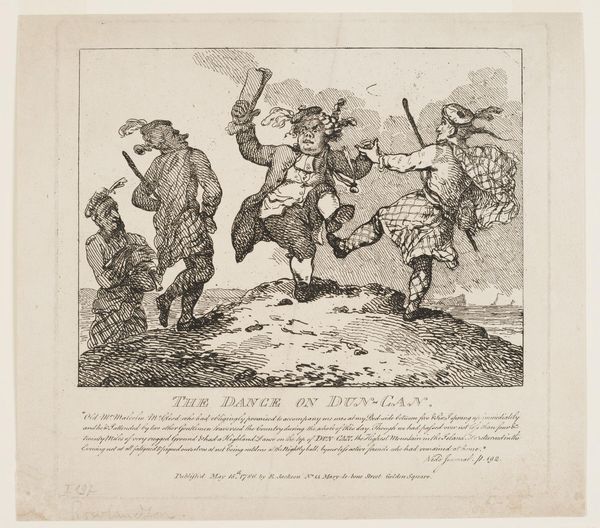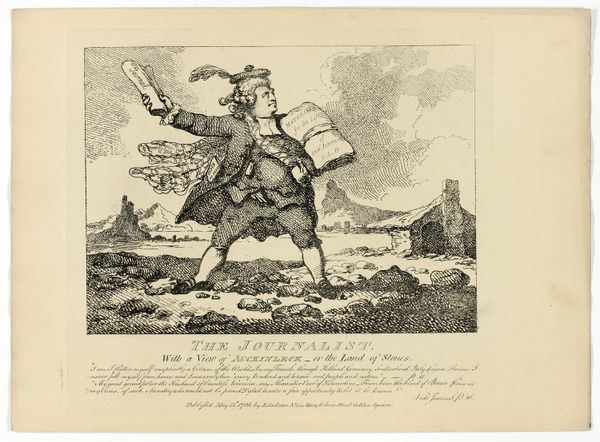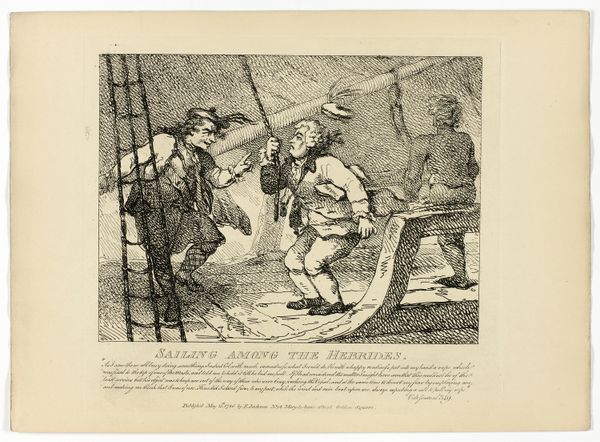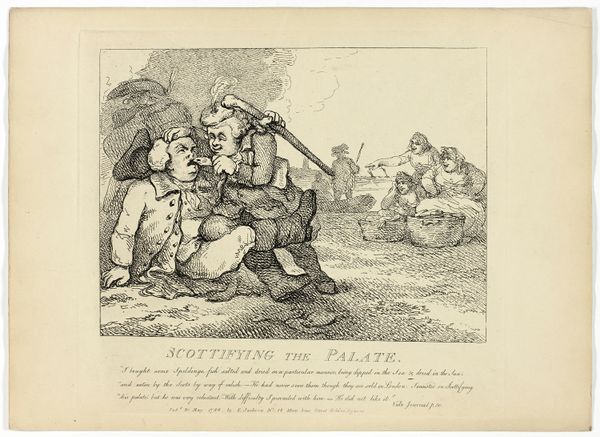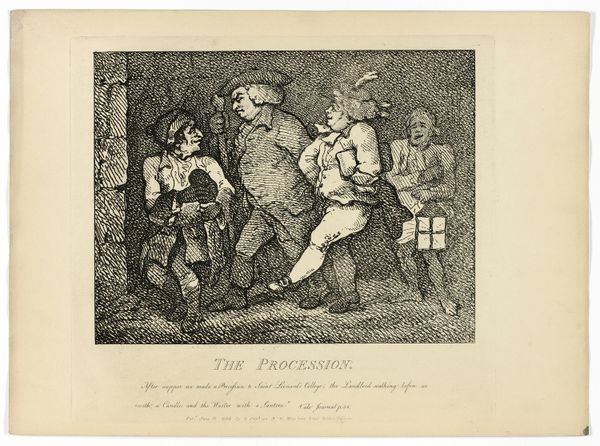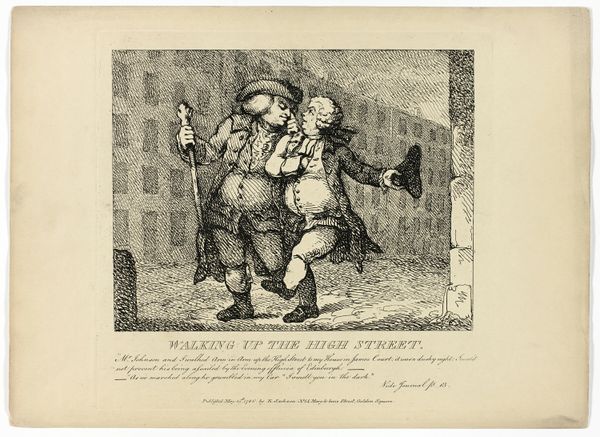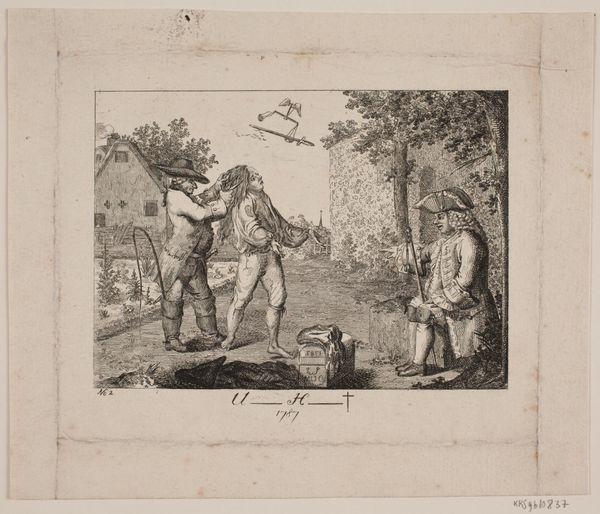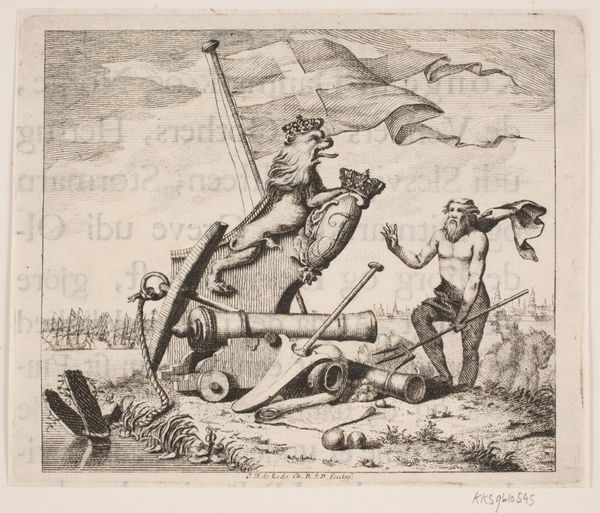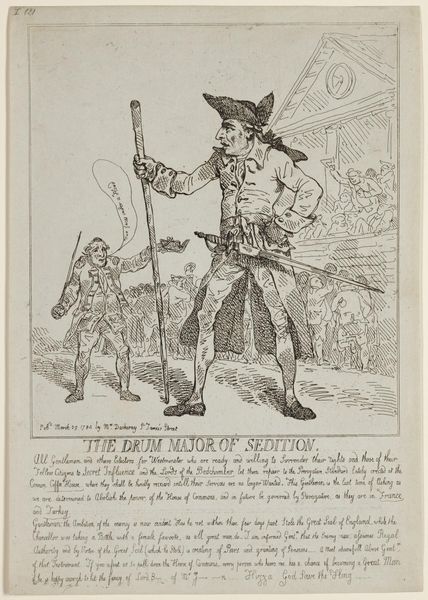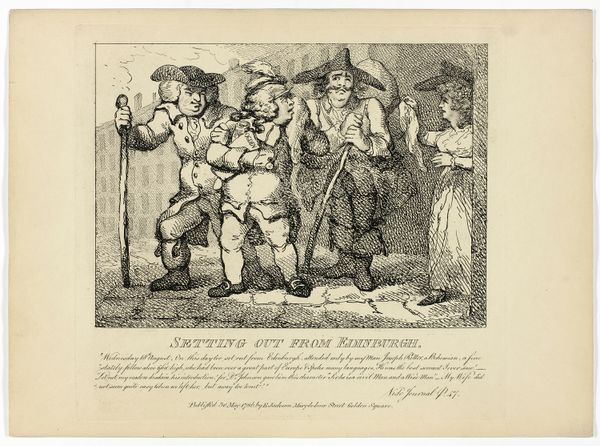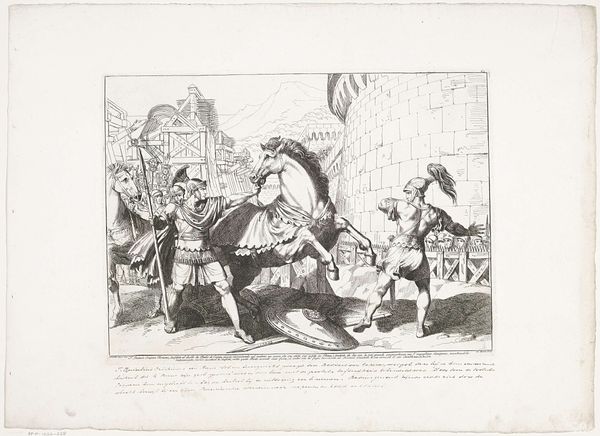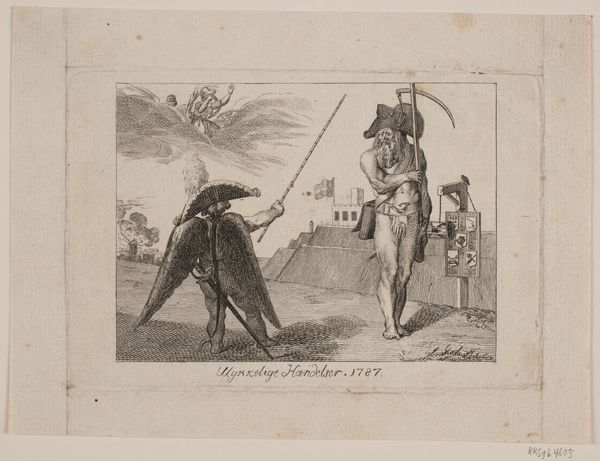
The Dance of the Dun-Can, from Boswell's Tour of the Hebrides 1786
0:00
0:00
Dimensions: 275 × 380 mm (sheet)
Copyright: Public Domain
Thomas Rowlandson made "The Dance of the Dun-Can" in 1786, using etching. It's a relatively democratic medium - a metal plate is coated with wax, the artist scratches an image into it, then acid bites into the exposed lines. Consider how the process itself shapes the image. Each etched line carries the potential for mass production. Look at the graphic quality of Rowlandson's rendering. The cross-hatching suggests shadow and form, but also the repetitive labor involved in creating the plate. The scene depicts a moment from James Boswell's famous tour of the Hebrides with Samuel Johnson. Rowlandson's approach is far from reverent. He emphasizes the awkward physicality of the dancers, their kilts and sporrans made of many short repetitive lines. The print satirizes the fashions and pretensions of the Scottish elite, even as it documents their cultural practices. Ultimately, this work reminds us that even seemingly straightforward images are shaped by the materials and methods used to create them, and their wider context. Rowlandson's print provides a window into the social and economic realities of 18th-century Britain.
Comments
No comments
Be the first to comment and join the conversation on the ultimate creative platform.
